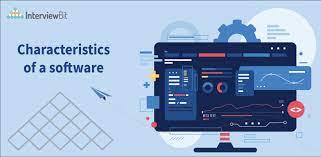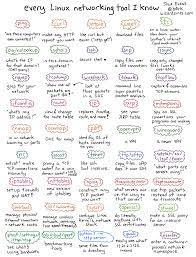Revolutionising Communication: The Evolution of Mobile Phones
The Evolution of Mobile Phones
Mobile phones have transformed the way we communicate, work, and entertain ourselves. From their humble beginnings as bulky devices with limited functionality to today’s sleek smartphones loaded with features, mobile phones have come a long way.
A Brief History
The first mobile phone call was made in 1973 by Martin Cooper, a Motorola engineer. These early mobile phones were large and cumbersome, often requiring heavy batteries to operate. It wasn’t until the 1980s that mobile phones became more accessible to the general public, although they were still considered luxury items due to their high cost.
By the 1990s, technological advancements led to smaller and more affordable devices. The introduction of GSM technology allowed for international roaming and text messaging, which significantly increased mobile phone usage worldwide.
The Smartphone Revolution
The launch of the iPhone in 2007 marked a turning point in mobile phone history. Smartphones combined the functionality of a computer with the convenience of a phone, offering internet access, multimedia capabilities, and an ever-growing array of applications.
Android quickly followed suit with its open-source platform, providing users with a wide variety of hardware options and customisation features. This competition spurred innovation and rapidly accelerated smartphone adoption globally.
Modern Features
Today’s smartphones are equipped with high-resolution cameras capable of capturing stunning photos and videos. Advanced processors allow for seamless multitasking and gaming experiences once reserved for dedicated consoles or PCs.
Connectivity has also improved dramatically; 5G networks are now rolling out worldwide, promising faster download speeds and reduced latency. Additionally, features like facial recognition and fingerprint sensors enhance security while maintaining user convenience.
The Future of Mobile Phones
The future looks promising as companies continue to push boundaries with foldable screens and augmented reality capabilities. These innovations hint at even more immersive experiences that could redefine how we interact with technology daily.
Moreover, sustainability is becoming increasingly important in phone design as manufacturers strive to reduce electronic waste by using eco-friendly materials and promoting recycling programmes.
Conclusion
From simple communication tools to essential life companions packed with features beyond imagination just decades ago—mobile phones have certainly evolved tremendously over time. As technology continues advancing at breakneck speed so too will our beloved devices adapt accordingly ensuring they remain indispensable parts our lives well into future generations!
9 Advantages of Modern Phones: Enhancing Communication, Productivity, and Lifestyle
- Convenient communication on-the-go
- Access to a vast array of information and resources
- Integration with productivity tools for work and study
- Instant connection with friends and family through calls, messages, and social media
- Capture precious moments with high-quality cameras
- Entertainment at your fingertips with music, videos, games, and apps
- GPS navigation for easy travel and exploration
- Stay organized with calendars, reminders, notes, and to-do lists
- Enhanced security features like biometric authentication for data protection
The Hidden Costs of Mobile Phones: Distraction, Isolation, Health Risks, Privacy Concerns, Addiction, and Environmental Impact
- 1. Distraction
- 2. Social Isolation
- 3. Health Concerns
- 4. Privacy Risks
- 5. Addiction
- 6. Environmental Impact
Convenient communication on-the-go
Mobile phones offer the unparalleled advantage of convenient communication on-the-go, enabling individuals to stay connected with others regardless of their location. Whether it’s making a quick call, sending a text message, or participating in a video chat, phones provide instant access to friends, family, colleagues, and emergency services. This level of connectivity ensures that important information can be shared promptly, decisions can be made swiftly, and relationships can be maintained effortlessly, making mobile phones an indispensable tool for modern-day living.
Access to a vast array of information and resources
Mobile phones provide users with unparalleled access to a vast array of information and resources at their fingertips. With just a few taps on a screen, individuals can instantly connect to the internet, access educational materials, stay updated on news and current events, and explore a wealth of knowledge on virtually any topic. This seamless access to information empowers users to learn, grow, and make informed decisions in both their personal and professional lives, enhancing productivity and enriching their overall experience with the world around them.
Integration with productivity tools for work and study
Mobile phones offer a significant advantage through their seamless integration with productivity tools for work and study. With access to a wide array of applications and software, users can efficiently manage tasks, collaborate with colleagues, and stay organised on the go. From email clients and document editing apps to project management tools and educational resources, mobile phones empower individuals to be productive and efficient in both professional and academic settings. The convenience of having these tools readily available in the palm of your hand enhances workflow and enables users to maximise their productivity wherever they may be.
Instant connection with friends and family through calls, messages, and social media
Mobile phones offer the invaluable pro of instant connection with friends and family through calls, messages, and social media platforms. With just a few taps on a screen, individuals can reach out to loved ones regardless of distance, fostering real-time communication and maintaining relationships effortlessly. Whether sharing exciting news, seeking advice, or simply staying connected on a daily basis, the convenience of being able to connect instantly via phone calls, text messages, or social media has revolutionised the way we interact and stay in touch with those who matter most in our lives.
Capture precious moments with high-quality cameras
With the advancement of technology, phones have become indispensable tools for capturing and preserving precious moments with their high-quality cameras. Gone are the days of carrying around bulky cameras; now, we can effortlessly snap photos and record videos of significant events, everyday adventures, and cherished memories using just our smartphones. The convenience of having a top-notch camera in our pockets at all times allows us to seize the moment and immortalise it in stunning detail, ensuring that we can relive those special experiences time and time again.
Entertainment at your fingertips with music, videos, games, and apps
With mobile phones, entertainment is always within reach, offering a plethora of options such as music streaming, video playback, gaming, and a vast array of apps to cater to every interest. Whether you’re looking to unwind with your favourite tunes, immerse yourself in captivating videos, challenge your mind with games, or discover new ways to enhance your daily life through apps, mobile phones provide a convenient and portable source of endless entertainment possibilities at your fingertips.
GPS navigation for easy travel and exploration
Phones offer the invaluable benefit of GPS navigation, revolutionising travel and exploration. With just a few taps on a smartphone, users can access real-time maps, directions, and traffic updates to navigate unfamiliar terrain effortlessly. Whether exploring a new city or embarking on a road trip, GPS technology provides accurate guidance, ensuring travellers reach their destinations efficiently and without the stress of getting lost. This feature not only enhances convenience but also encourages users to venture off the beaten path, discover hidden gems, and embrace spontaneous adventures with confidence.
Stay organized with calendars, reminders, notes, and to-do lists
Phones offer a valuable advantage in helping users stay organised with built-in features such as calendars, reminders, notes, and to-do lists. These tools enable individuals to efficiently manage their schedules, set important reminders, jot down quick notes, and keep track of tasks that need to be completed. With the convenience of having these organisational aids readily available on their phones, users can stay on top of their commitments and responsibilities, enhancing productivity and reducing the likelihood of missing important deadlines or appointments.
Enhanced security features like biometric authentication for data protection
Enhanced security features such as biometric authentication have revolutionized data protection on phones. By incorporating technologies like fingerprint sensors, facial recognition, and iris scanning, phones offer users a secure and convenient way to safeguard their sensitive information. Biometric authentication not only provides a higher level of security compared to traditional password methods but also ensures quick and seamless access to personal data. This advanced security feature gives users peace of mind knowing that their privacy is well-protected, making phones an indispensable tool for managing confidential information in today’s digital age.
1. Distraction
Phones can be a double-edged sword when it comes to distraction. While they offer unparalleled connectivity and access to information, they can also be a significant source of distraction, causing a decline in productivity and focus. The constant notifications, calls, messages, and the allure of social media can easily divert attention away from important tasks at hand. This perpetual state of distraction can hinder one’s ability to concentrate fully on work or studies, ultimately impacting overall productivity and efficiency. It is essential for users to establish healthy boundaries and practices to mitigate the negative effects of phone-induced distractions on their daily lives.
2. Social Isolation
Excessive phone use can lead to social isolation as it often replaces valuable face-to-face interactions with virtual communication. Spending too much time on phones can detract from meaningful connections with friends, family, and colleagues, ultimately hindering the development of strong interpersonal relationships. The allure of constant digital engagement may result in individuals withdrawing from real-world social situations, leading to feelings of loneliness and disconnection. It is essential to strike a balance between digital communication and in-person interactions to maintain healthy social bonds and combat the potential negative effects of phone-induced social isolation.
3. Health Concerns
Prolonged phone usage poses significant health concerns, including potential physical ailments such as eye strain, neck pain, and disrupted sleep patterns. The constant staring at screens can strain the eyes, leading to discomfort and vision problems over time. Moreover, the posture adopted while using phones can contribute to neck pain and musculoskeletal issues. Additionally, the blue light emitted by phone screens can disrupt the body’s natural sleep-wake cycle, potentially leading to insomnia and other sleep disturbances. It is essential for phone users to be mindful of these health risks and take necessary precautions to mitigate their impact on overall well-being.
4. Privacy Risks
Privacy Risks: Phones store vast amounts of personal data that can be vulnerable to hacking or misuse, posing privacy risks. With the convenience of having our contacts, messages, photos, and browsing history all stored on a single device, the potential for this sensitive information to fall into the wrong hands is a significant concern. From identity theft to invasive surveillance, the digital footprint we leave on our phones can expose us to various privacy breaches, highlighting the importance of safeguarding our personal data in an increasingly connected world.
5. Addiction
The addictive nature of smartphones poses a significant con, leading to excessive screen time and dependency on digital devices for entertainment or validation. The constant notifications, social media updates, and immersive games can create a cycle of compulsive behaviour, detracting from real-world interactions and activities. This addiction to smartphones not only impacts productivity and mental well-being but also hinders the development of healthy boundaries between technology use and personal life. It is essential to be mindful of our smartphone usage to prevent falling into the trap of excessive dependency on these devices.
6. Environmental Impact
The environmental impact of phones is a significant concern, with the production and disposal of these devices contributing to electronic waste and environmental pollution. The constant demand for new phones leads to increased manufacturing processes that deplete natural resources and produce harmful emissions. Moreover, improper disposal of old phones results in electronic waste that can leach toxic substances into the environment, threatening ecosystems and human health. It is crucial for both manufacturers and consumers to consider the environmental consequences of phone usage and disposal practices to mitigate these harmful effects on our planet.








